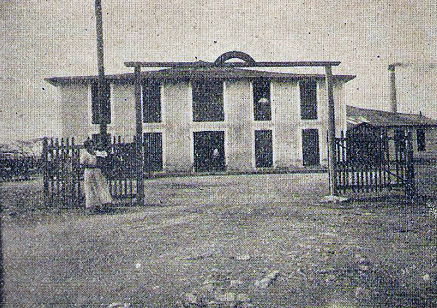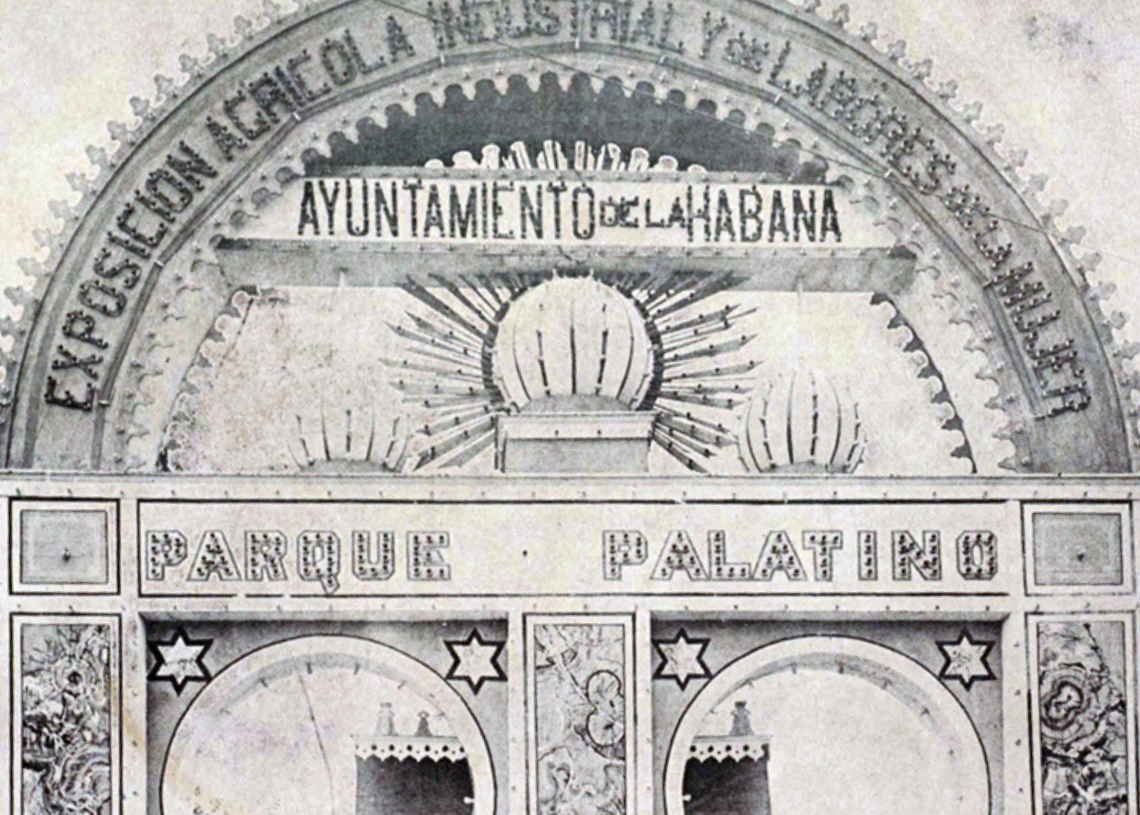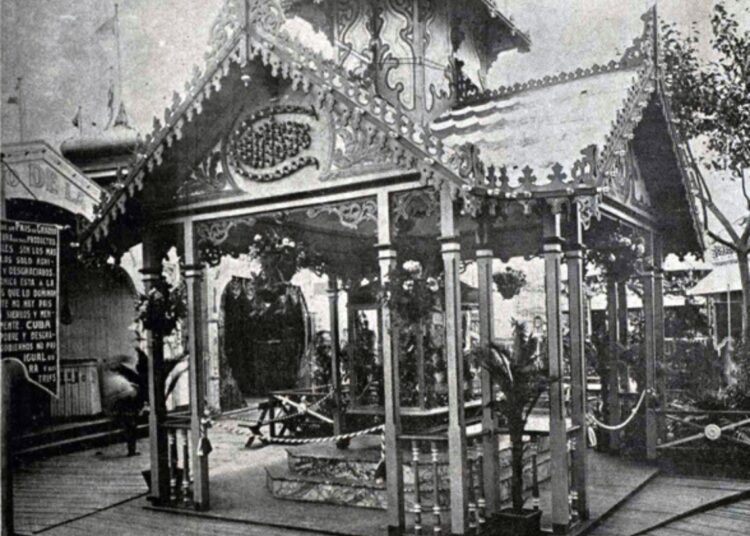In Havana in 1880, most of the footwear sold came from Europe and the United States. However, some shoe shops had their small space in the market, very impoverished by the damage caused to the economy by the wars of independence.
It was a craft in which few workers were involved. Generally, they were family businesses and, usually, they also functioned as saddleries.
They existed long before, because José García de Arboleya, in his Manual de Historia de Cuba published in 1859, already refers to footwear producers.
In the 1880s, shoe stores were scattered throughout the neighborhoods of Havana. Next to the famous El Louvre Restaurant, in San Rafael, was El Modelo, perhaps the best known in the city.
I have found references to El Hombre Libre, located at 39 Luz Street, between Havana and Compostela; La Ampadurnesa, on Teniente Rey; La Flor Cubana, on Calle Luz; La Barcelonesa, on San Ignacio; La Prueba, on Industria; La Mahonesa, on Aguilar; La Parisiense, on Havana; La Flor de Sevilla, on Obrapía; El Brazo Fuerte, on Belascoaín; El gusto cubano, on Galiano, to name just a few.
On Muralla, on the corner of Aguacate, one of these small production units began to operate. In just a few years it would become Casa Incera, respected in the business world. According to the Diario de la Marina, the name Las Merceditas was first given and among the founders was Lino Incera, uncle of Alfredo and Flavio Incera Castillo, who would develop the enterprise.
At first it operated as a saddlery warehouse and had a small footwear workshop. Lino also had a modest saddlery workshop on Virtudes Street.
In 1886 the number of shoe shops in Havana had grown to 57, according to research by sociologist María Antonia Marqués Dolz. By reading advertisements I have been able to identify, in the 1890s, in the category of footwear factories, only two: La Prosperidad, located on No 58 Bernaza Street and La Fe, in El Cerro.

The Inceras
The Incera Castillos were born in a small town in Cantabria, Spain, called Cicero. I have already said that they started with a small family business. I will focus the article on reviewing the evolution of the company and its dynamic role in the island’s economy.
Their case was similar to that of hundreds of trading companies that formed part of the Cuban business fabric in productive or service activities until the state intervention in the 1960s.
Alfredo Incera Castillo stood out for his organizational skills, capacity for work and business vision; he was also an active member of the League of Merchants, the Association of Commercial Employees of Havana (he was a member in 1894), the Fire Department and the Montañesa Charity Society, of which he would become president.
In 1905 he was elected Treasurer, for two years, of Cuba’s National Center for Industrial and Manufacturing Development. He arrived in the Cuban capital when he was just 13 years old to work with his uncle Lino.
Like almost all the pioneers of the footwear industry, from an early age he learned the trade with his sleeves rolled up to his elbows and in long, exhausting workdays.
In 1889 he was already operating as A. Incera y Co. On March 15, 1901, Alfredo founded a business company called Incera y Co., where he would serve as manager along with Lázaro Incera. There were then seven footwear factories in the Cuban capital.
As of January 1, 1905, the company was reformed and Alfredo Incera Castillo was the sole manager; Flavio Incera Castillo and Juan M. Rueda Riva were the general partners.
In 1908, it was transformed again, when Guillermo Stincel Montiel joined as managing partner, contributing urban properties, from which it can be inferred that they were looking for spaces to expand the business.
The partnership with Guillermo Stincel Montiel was short-lived; it was dissolved on February 26, 1910. The company was once again under the name of Alfredo Incera, who granted Macario Rodríguez special power to participate in the company, and returned to Guillermo the properties he had contributed.
In the 1910s, it seems that the company underwent changes, because it operated under the names of Flavio Incera y Co and A. Incera; both were importers of saddlery and footwear manufacturers.

The Cuban Tanning Company
The promotion of tanneries was very beneficial for the development of the footwear industry, which is why some businessmen such as Alfredo Incera became involved in creating them or contributed as shareholders.
On July 21, 1911, Alfredo Incera established the Cuban Tanning Company S.A., together with other investors, including Antonio Cabrisas (son), also a shoe manufacturer.
This business, with capital of $150,000 in Spanish gold, was dedicated to the purchase and sale of leather and its tanning; in addition to the manufacture of transmission belts. The company acquired the El Fomento tanning factory, owned by Pujol and Company, in Cárdenas, and the warehouse and transmission belt factory owned by that company in Havana, located at No 106 Príncipe Alfonso Avenue. Amadeo Pujol would continue to contribute his experience at the head of the industrial part of the business.
At the beginning of 1913, with the modernization of the Cárdenas factory, the production of tanned leather rose to 3,000 pieces per month.
They also opened another factory in 1919 in the city of Matanzas, with an authorized capital of $1,200,000, with a similar objective. The brand they marketed was called Cromo, “classy, resistant and soft,” according to an advertisement that appeared in the Diario de la Marina; the soles they made were used to make the footwear used by the Army.
Researcher María Antonia Marqués Dolz says that their production was aimed at the national market and adds that “those located in Cienfuegos, Santa Clara, Camagüey and Santiago de Cuba by the New York firm Schmoll Fils Cº, established in Havana since 1914, placed part of their products on the world market.”

Business expansion
In September 1915, the Casa Incera announced that it had opened a department to sell raincoats, suitcases, saddles, leggings, and other products at retail, at the same prices as wholesale.
In addition to shoes, the business, which was still on Muralla and Aguacate, sold leather, soles, canvas, and tools to shoemakers and saddlers.
In 1915, there was a shoe shop called La Casa Azul in the city of Ciego de Ávila. It was owned by Flavio Incera; unfortunately, the press does not specify the second surname, a pending issue to find out the Incera’s ties to the former province of Camagüey, to which the municipality of Ciego de Ávila belonged, since there is more than one piece of evidence that shows that there were, such as the fact that Alfredo presided over the powerful Camagüey Industrial Company in 1917, and was one of the shareholders and managers of this trading company.
In April 1917, together with other partners, he created the Neptuno Industrial Company S.A., which would be dedicated to the manufacture of raincoats, umbrellas, and articles derived from rubber and celluloid. The capital of the new company was $200,000 pesos.
On February 25, 1918, before the notary Conrado Ascanio, a regular collective business company called Incera y Ca. was established. Its managing partners were the brothers Alfredo and Flavio Incera Castillo, Marcario Rodríguez Rodríguez and Enrique Bonavia Zornoza.
One of the advertisements promoting the Incera brand highlighted that they lasted “one to two years, both in ankle boots and in walking boots of different shapes and colors” and challenged the customer: “Buy a pair, and if it doesn’t last twice as long as any other similar pair, we will give you your money back.”
The shoes produced by this company were available in 1918 in “all the important establishments in the provinces and some in Havana, and we also sell them in our retail department,” according to the aforementioned advertisement.
The continuous movement in the disintegrations and new formations of the company is curious. In 1920, the business kept its name, and the Incera brothers and Marcario Rodríguez Rodríguez were the managers, and Inocencio Cerro Veci joined in.
Preparations for the 1925 sugar harvest had already begun. Casa Incera was trying to get ahead of the dozens of factories that produced footwear in Cuba. It announced its offer to merchants in the Diario de la Marina:
“In order to be prepared to serve orders upon receipt of the order during the next harvest, we have started making ten thousand dozen nailed shoes for field workers.
“A large part is of the highly sought-after Incera brand, due to its great credit, and the rest of the Hercules brand, second class, at a very low price, in accordance with the small daily wage earned by laborers.
“In quantities of twelve dozen or more we will offer a special price and outside of all competition.”
In January 1925, due to the expiration of the contract, the company was disintegrated and a new one was formed with the name of Incera y Ca.
S. en C. would have Marcario Rodríguez Rodríguez, Flabio Incera Castillo, Inocencio Cerro Veci and Alfredo Incera Navas as managers; and as limited partners Alfredo Incera Castillo, Enrique Bonavia Fornoza and Luis Incera Naveda.
We can see that members of the Incera family continued to join the management of the company. At that time, in addition to the saddlery warehouses, located at No 83 Muralla Street and No 128 Aguacate Street, they owned the footwear factory located at No 7 Calzada de Palatino.
In January 1926, the Company was dissolved and a limited partnership was registered under the name of Gómez, Incera y Ca. Alfredo Incera Navas and Gustavo Gómez Baragnes would be managers, Alfredo Incera Castillo would be limited partner and Manuel García Curbeira would be the industrial partner. It would continue the legitimate business, including the Coffee Roaster business, which the previous company had already been developing, located at No 4 Primelles Street, in El Cerro.
In 1927 Alfredo Incera Castillo was part of the board of directors of the National Association of Industrialists, headed by the magnate of the beer industry Julio Blanco Herrera.

Alfredo would continue for many years “contributing a great deal, with his energies, to the development of the country’s wealth,” as highlighted by the Diario de la Marina. His main business, Casa Incera, was maintained by his children, although he, already over 60 years old, continued to be active in other trading companies.
He frequently traveled to his hometown, where he made a donation for the construction of a school and was the largest contributor to the construction of a park that, in gratitude, the City Council named after him, in addition to declaring the businessman the Favorite Son of Cicero.
The precursors exhibit in Palatino
In the period 1906-1907, 4 million pesos were invested in footwear imports in the country.
It was evident that the market was recovering and that there was also a favorable environment for developing the industry, despite the competition with foreign suppliers, since livestock and leather tanning were in full growth and with it the possibility of acquiring cheaper raw materials. In addition, the introduction of technological advances, as engines for production, increased factory performance.
The Industrial, Agricultural and Women’s Work Exhibition, inaugurated on February 26, 1909 in the Palatino Park, an amusement center located in El Cerro, Havana, awarded prizes to the most relevant footwear producers.

The event, closed with the presence of the President of the Republic José Miguel Gómez, awarded Antonio Cabrisas the Grand Prize for mechanical footwear; Soler y Bulnes and Ricardo S. Guttman received a gold medal; the companies of José Sánchez, Domingo Blanco and Amadeo Villa, in the category of handmade footwear, won a gold medal and José Freyre the silver medal. Incera y Ca., in the category of cowhide shoes, was awarded a gold medal.
Among these names we find well-known entrepreneurs in the history of the Cuban national footwear industry such as Amadeo Villa, with his brand Amadeo, whose factory would be the second largest in the country, and Paulino Bulnes Gonzalo, with the Bulnes brand. They contributed to the takeoff of a productive branch that would transcend the island’s borders; this will be illustrated in the second work of this series.
________________________________________
Sources:
María Antonia Marqués Dolz: Las industrias menores: empresarios y empresas en Cuba (1880-1920), Ciencias Sociales publishers, Havana, 2006.
Eduardo Anillo Rodríguez: Cuatro siglos de vida desde Pedro Barba hasta Varona Suárez, Imprenta Avisador Comercial publishers, Havana, 1919.
Federico Caine: Directorio hispano-americano. Indicador habanero, Rodríguez, Pulido y Ca. publishers, Havana, 1880.
Cuba y América
Diario de la Marina
El Cantábrico
El Fígaro
La Montaña










